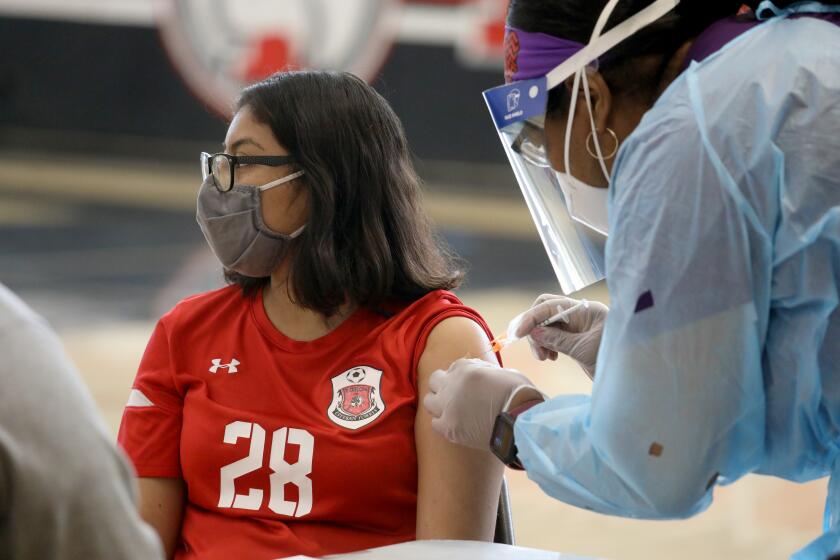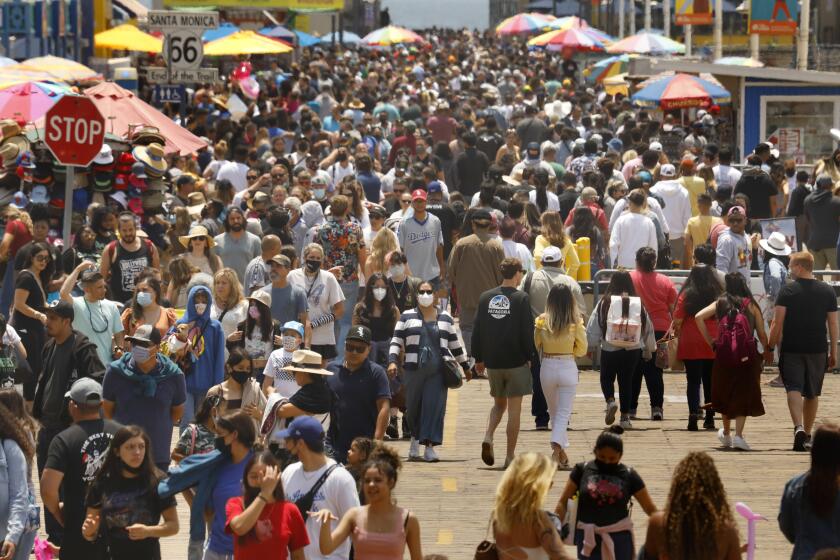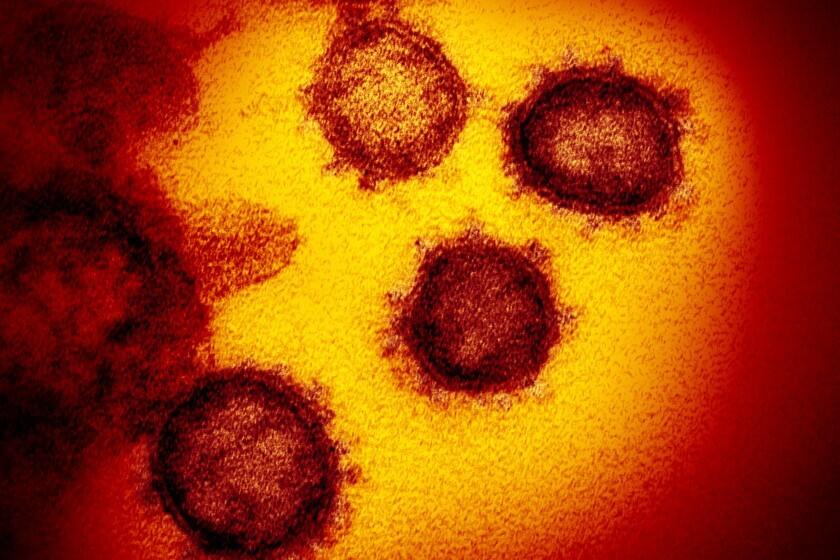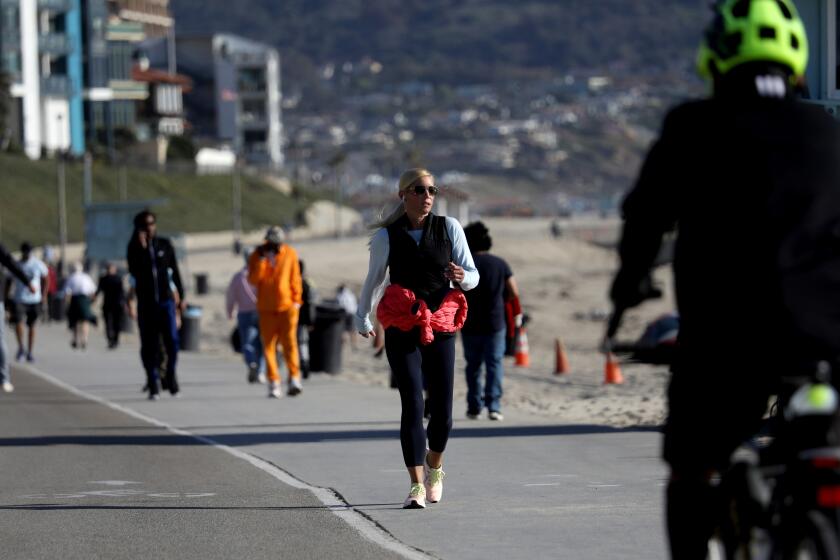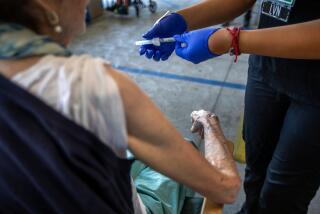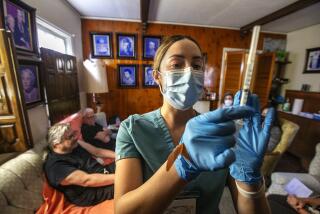Rural Northern California is falling behind in vaccinations, and COVID-19 cases are rising
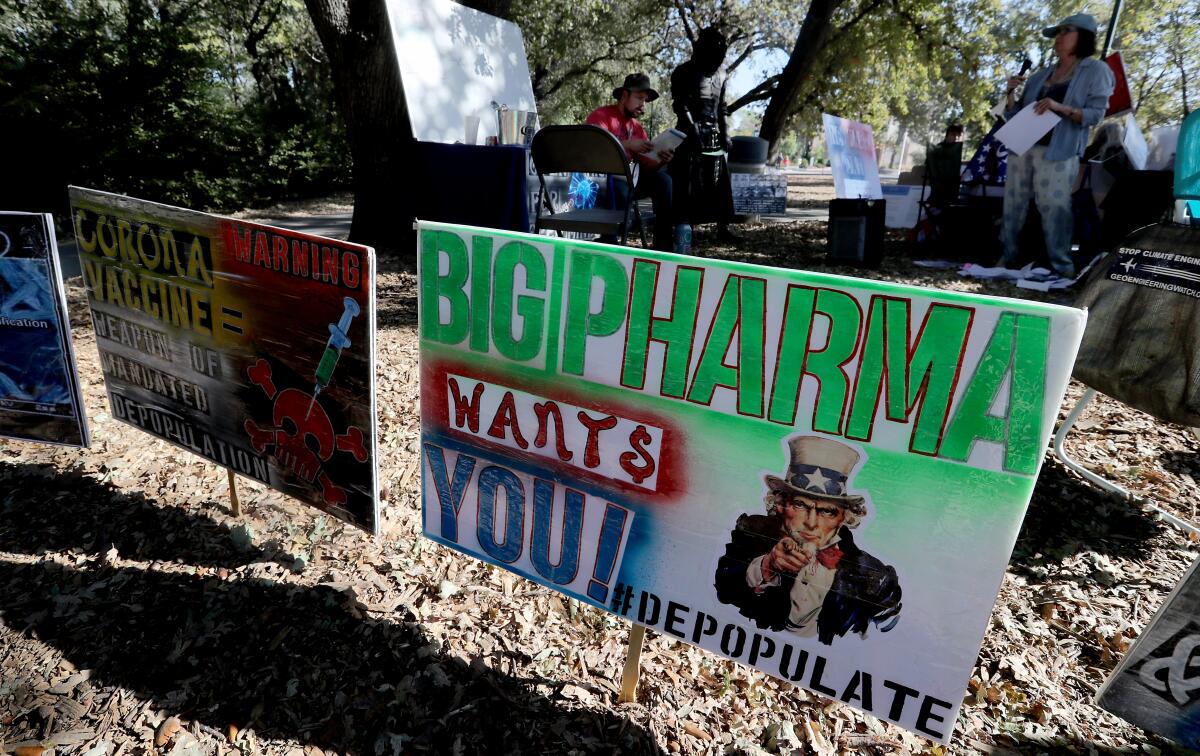
SAN FRANCISCO — Some rural counties in Northern California are falling further behind in COVID-19 vaccination rates compared with the rest of the state, causing cases to remain flat or, in some cases, to rise.
A Times analysis found that the counties with the lowest vaccination rates were likely to have higher recent case rates per capita. Counties in rural Northern California and the greater Sacramento area fared worst, while Southern California and the Bay Area have fared best in terms of higher rates of vaccination and lower daily case rates, the analysis found.
Health officials in some of the rural areas with low rates of vaccination said they are battling reluctance on the part of residents to get the shot, which leaves a greater percentage of the population exposed to the coronavirus than in more urban parts of California, where cases continue to plummet.
“COVID is still here and is still pretty prevalent in our community,” said Kerri Schuette, public information officer for the Health and Human Services Agency of Shasta County, where only 36% of residents have received at least one dose. “And that’s especially concerning in a county that doesn’t have a very high vaccination rate, so there are a lot of people who are vulnerable still.”
These gaps in vaccine coverage, though not new, are sparking concerns that some swaths of the state remain at risk of potential outbreaks, complicating California’s emergence from the pandemic that has upended life for more than a year.
Statewide, 54% of residents of all ages have received at least one dose of vaccine, according to data compiled by The Times.
In San Diego, San Francisco, Santa Clara, San Mateo and Marin counties, more than 67% of residents are at least partially vaccinated. But across much of the state’s rural north, fewer than 45% of residents have rolled up their sleeves.
One month ahead of the target date set by the Biden administration, California has now at least partially vaccinated 70% of its adult residents against COVID-19.
Those areas where fewer people are vaccinated are most likely to see a coronavirus rebound, officials say.
“We are seeing high case rates in our northern rural counties, where vaccination rates are lower,” tweeted State Epidemiologist Dr. Erica Pan.
Among the counties of concern in the rural northern part of the state are Tehama and Siskiyou, the only two in California identified by the U.S. Centers for Disease Control and Prevention as having a “high” virus transmission rate.
Only 27% of Tehama County residents have gotten a vaccine shot, according to data compiled by The Times, and the county has had California’s worst case rates over the past seven days, reporting about 20 new cases per day per 100,000 residents. That’s up from 8 new cases per 100,000 residents one month ago.
Only Lassen County has a lower level of vaccination than Tehama, at about 22%. For the seven-day period that ended Sunday, there were 7 daily cases per 100,000 residents in Lassen County, up from about 3 a month ago.
In Humboldt County, where 50% of residents are at least partially vaccinated, the daily case rate per 100,000 residents in early April was just 2. It jumped to 18 in mid-May before falling to about 9 for the seven-day period that ended Sunday.
Shasta — one of just four counties statewide still in the second-most restrictive level in the state’s reopening framework, the red tier — has been unable to substantially reduce its daily case rate for months. A month ago, its average daily case rate was 8 per 100,000 residents; it rose to a peak of 14 in early May before falling to 7.5 for the seven-day period that ended Sunday.
By comparison, per 100,000 residents, Orange County is reporting 0.9 new cases a day; Santa Clara County, 1.1; Ventura, 1.4; San Francisco, 1.6; and San Diego, 2.3. Excluding a recent backlog of nearly 3,900 old coronavirus cases, L.A. County is reporting 1.9 new daily cases per 100,000 residents over the past week.
A California workplace safety board on Thursday is scheduled to consider whether to relax mask and physical distancing rules for workers.
Health officials are troubled by the lack of interest in vaccination in the state’s northern rural areas.
“We just have seen a real die-off in interest in the vaccine lately. And I’ve reported that before — that has not changed,” Dr. Warren Rehwaldt, the Del Norte County health officer, said at a recent public meeting. Just 35% of residents have received at least one shot in Del Norte County, which is home to Crescent City and sits on the Oregon border.
Much of the vaccine hesitancy is fueled by distrust — of health officials, politicians and scientists. Misinformation about the vaccines’ cost, efficacy and side effects has spread across social media, leaving health officials with the dual task of making it as easy as possible to get the vaccine and knocking down conspiracy theories that may dissuade people from taking their turn.
Shasta County, home to Redding and one of the most populous counties in the north of the state, has been especially polarized over the government response to COVID-19. There’s an effort underway to recall three members of the Shasta County Board of Supervisors who supported Gov. Gavin Newsom’s pandemic health orders.
Schuette said Tuesday that she doesn’t think Shasta County is “significantly different than many other rural, conservative areas. We have more people here who are hesitant to take the vaccine.
“We’ve worked really hard over the last 16 months or so to build our reputation as a trusted source of information,” Schuette said. “We’ve answered thousands of questions on Facebook and through email and in media briefings and in town hall meetings. We’re just really trying to provide that accurate, science-based information that people can refer to, that they can look over as they’re looking to make the decision as to whether today is the day that they’re ready.”
The World Health Organization has unveiled a new naming system for coronavirus variants that uses Greek letters instead of geographical locations.
Indeed, dissemination of accurate information is key, UC San Francisco epidemiologist Dr. Kirsten Bibbins-Domingo said, noting that some people have been suspicious they’ll be charged for shots, which are free.
Surveys by the Kaiser Family Foundation have shown that Republicans and rural residents are among the least enthusiastic groups in the U.S. when it comes to getting vaccinated. About 26% of rural U.S. residents and 28% of Republicans say they will definitely not get the vaccine or will get it only if required; by comparison, 15% of urban residents, 19% of suburban residents, 20% of independent voters and 7% of Democrats say the same.
Without increasing vaccination rates, “the concerns are that you’ll have this smoldering endemic disease in the population,” said Brad Pollock, an epidemiologist at UC Davis. “The longer it lingers around, the more likely you are to have these odd mutant strains show up.”
Compared to earlier waves of the pandemic, unvaccinated people now have to deal with a more contagious variant, B.1.1.7 — newly named the Alpha variant by the World Health Organization — which has become the dominant strain in California.
“That means the bug is more infectious, it’s more efficient at getting people infected,” Pollock said. “The people that ... aren’t vaccinated are more likely to get infected and are more likely to spread it.”
Increasing evidence about the effectiveness of COVID-19 vaccines and California’s low case rates convince experts it’s safe to stop wearing masks.
It’s not just vaccine hesitancy that plays a role in low vaccination rates — lack of access is also a factor. Bibbins-Domingo said strategies that can be relatively successful in urban areas and the suburbs — like administering shots at mass vaccination sites and major pharmacy chains — may not work in rural areas, where getting vaccines in the hands of small clinics and local pharmacists can be more effective.
“Access has always been — and continues to be — the biggest barrier to our vaccination rates, as opposed to someone’s inherent belief that they don’t want to be vaccinated,” Bibbins-Domingo said. “When cases are rising, and we adopt strategies that lower access barriers, and we put vaccines in the hands of the types of clinicians and community groups that actually have the trust of a community, people get vaccinated. We see it time and time again. And that’s what we have to double down on now.”
To be sure, not all counties with low vaccination rates have relatively high rates of infection. Trinity County, which has a population of just 13,000, has one of the state’s lowest daily coronavirus case rates despite just 35% of its residents being at least partially vaccinated. Del Norte County averaged one new coronavirus case a day over the past week, despite its low vaccination rate.
Still, as summer begins, it could be problematic if outbreaks in one area of the state find their way into traveling groups, such as farmworkers, some of whom remain unvaccinated.
“As we enter the intense agricultural seasons and people live in dense housing, near the fields or in these small towns, it’s always a risk for transmission,” said UC San Francisco epidemiologist Dr. George Rutherford. “Farmworkers who come and go, and they work the harvest up and down the state ... those are people who could really do well from getting a J&J vaccine — a single-dose vaccine.”
Lin reported from San Francisco, and Money and Greene from Southern California.
More to Read
Sign up for Essential California
The most important California stories and recommendations in your inbox every morning.
You may occasionally receive promotional content from the Los Angeles Times.
